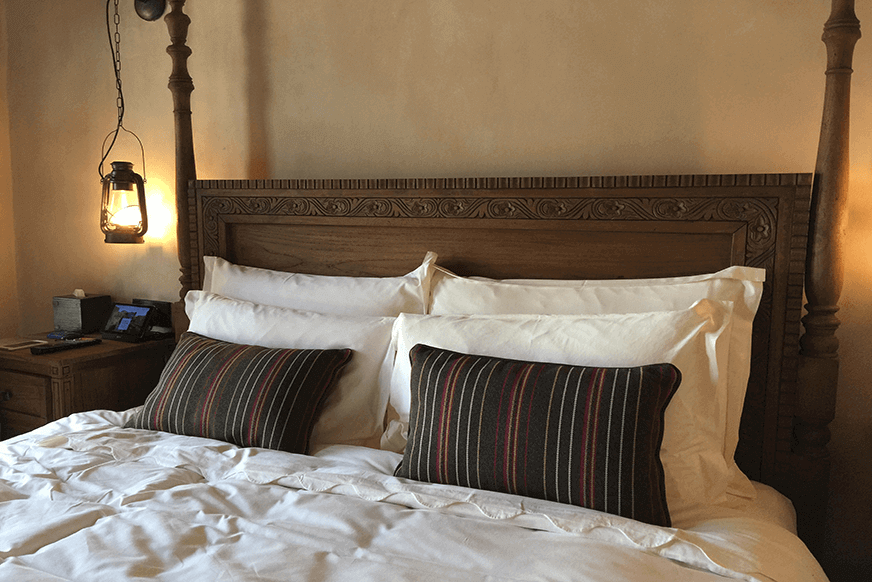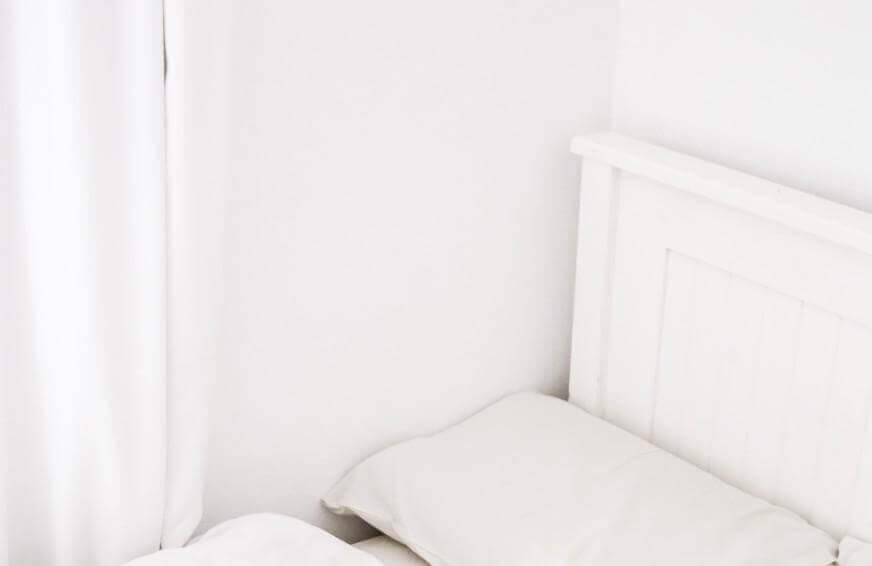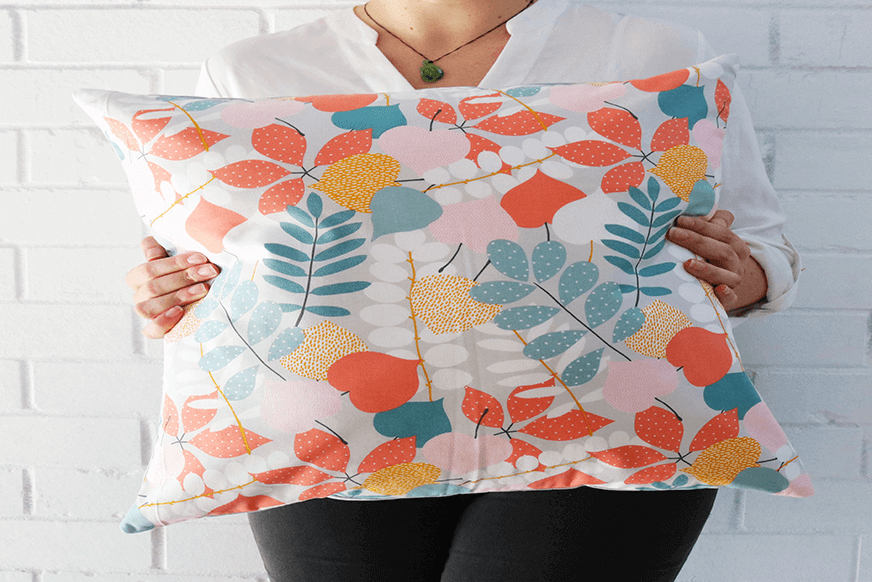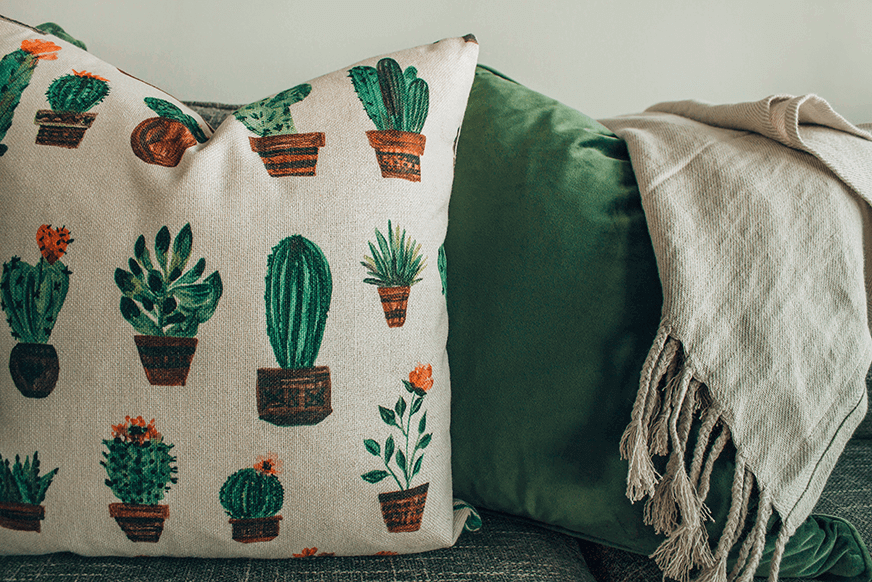1. Types of Sleeping Pillows
 There are many types of sleeping pillows. Feather and down pillows offer conform, softness, and support. The feathers used in a quality pillow are very small and frizzy. Did you know that one of these feathers is as strong as carbon fiber? They are the natural spring of nature.
There are many types of sleeping pillows. Feather and down pillows offer conform, softness, and support. The feathers used in a quality pillow are very small and frizzy. Did you know that one of these feathers is as strong as carbon fiber? They are the natural spring of nature.
If you want the softest and softest pillow, go for down. Down comes from the fluffy inner layer of a bird: think of feathers without quills. Down pillows are soft, swollen and flexible, and are known for their ultimate luxury. A popular type of down pillow is the European goose down with a filling power of 600 and more. Down pillows are soft, light and cozy, but not intended to provide support.
Memory foam pillows are great because they remember you all night. You stay comfortable because the pillow fits your individual shape, allowing your shoulders, neck, and head to rest in a natural position. Memory foam pillows adjust as you move through the night. Pillows made with memory foam come in a variety of shapes and sizes and are designed to recover to their original shape at different speeds.
Microbead pillows are made up of small beads called unexpanded polystyrene (EPS). These accounts provide hard support. Travel neck pillows are usually made of microbeads.
Are you looking for something completely natural and herbal? Buckwheat pillows are full of buckwheat seed husks. They offer great support.
Are you sleeping with a CPAP machine? Sleep apnea pillows are designed to accommodate the octopus tubes and cables of the CPAP machine. This type of pillow is made with polyester fiber or foam padding. It is important to try a sleep apnea pillow with your machine to make sure you have the right feeling and height for your needs.
The neck pillows are constructed with a deflector that is designed to support the spine so that the head and neck are positioned correctly to sleep comfortably.
Snuggle up against a body pillow. These long pillows (usually 54 inches) can be placed between the legs to support the hip and lower back. They are great for snuggling and hugging at night. This type of pillow can save your life during pregnancy.
If you have lower back pain, a lumbar pillow may be just what you need. These pillows provide support just above the lumbar area, allowing the lower back to relax naturally.
Wedge pillows have a triangular shape that you can use to support different areas of your body. These pillows are made of foam, polyester fiber padding or a combination of both. They are excellent for reading in bed or for propping up the upper body to help relieve acid reflux. A wedge pillow can also raise the legs and feet to help relieve the discomfort of varicose veins. Wedge pillows are perfect for pregnancy and can help support the abdomen during the second or third trimester.
2. How Your Pillow Affects Your Mood
 You probably know someone who will not leave home without a special pillow, claiming that a particular bag of fluff or feathers is the key to a good night’s sleep.
You probably know someone who will not leave home without a special pillow, claiming that a particular bag of fluff or feathers is the key to a good night’s sleep.
But the benefits of pillows do not go far beyond comfort and positioning. Sometimes, pillows even harm your health.
Here is a video that I find very valuable
Lack of sleep can affect mood, thinking skills and appetite. Lack of chronic sleep increases the risk of falls, obesity, diabetes, high blood pressure, and heart disease.
Lack of sleep certainly affects your mood. When you have not slept enough, you may feel cranky, irritable, slow and generally moody. Lack of sleep has also been linked to anxiety and even depression.
This relationship can also work in reverse. “There is a great relationship between psychiatric and psychological problems and sleep. Therefore, people who are depressed or have anxiety often have problems with sleep as part of those disorders,” said Dr. Lawrence Epstein, Medical Director from the Sleep Health Centers and Harvard Medical instructor. School said in an interview with the Harvard Sleep website.
According to one study, lack of sleep can affect the way our brains regulate emotions. The researchers asked 18 participants to stay up all night, and were scanned to control their brain activity. Participants took a test after sleepless night and the same test after a night’s sleep. The test was designed to provoke emotional responses.
“It turns out that we lose our neutrality [when we are deprived of sleep],” researcher Talma Hendler told ScienceAlert. “The brain’s ability to know what is important is compromised. It is as if suddenly everything is important.” As a result, people with lack of sleep may overreact to small problems, get sad or frustrated quickly, or lose their temper more frequently.
“If you feel depressed, you may not realize that lack of sleep is the culprit,” explains the National Sleep Foundation website. “But even small levels of sleep deprivation over time can reduce your happiness. You may see that you are less excited, more irritable or even have some of the symptoms of clinical depression, such as feeling persistently sad or empty. All these alterations in your mood can affect not only your individual mental health but also your relationships and family dynamics. “
If you constantly sleep very little and your mood is negatively affected, you should see if there is any way to change your schedule so you can sleep more.
If you have difficulty falling asleep in the first place, try to practice excellent sleep hygiene at bedtime at the same time every night and avoid screens and caffeine before bedtime. Those who fight against long-term insomnia should talk to their doctor about some treatment options. And when you find yourself grumpy due to lack of sleep, do your best not to overreact when unfortunate things happen.
Have you ever woken up early to start a work week and experienced a profound “Monday case”: that feeling of drowsiness, lack of energy, irritability and general malaise that comes with the start of a new work week. Or has the lack of sleep ever caused you to become unusually angry with a friend or relative for a minor problem? If so, you know from experience what science is now confirming: sleep has a great impact on our mood and mental well-being.
In both the short and long term, the quantity and quality of our sleep can play an important role in our mental health, including how we feel and how we act towards other people. Even a single night of insufficient sleep can cause stress and a tendency to get frustrated easily. Continuous or chronic sleep deprivation can have even more profound effects, which significantly affect a person’s general mood and, in some cases, lead to problems such as depression and anxiety. More and more research establishes links between depression and insomnia, and because conditions such as depression can make sleep difficult, these problems often become part of a cycle of self-perpetuation.
Both sleep and mental health are large and complex issues that still require years of dedicated research to better understand. However, the more we learn, the more we discover that sleep should be considered a key part of a person’s well-being, which includes their physical and emotional health.
3. Your Pillow is as Important as Your Mattress
 When was the last time you thought about your bed pillows? If your answer is “a long time has passed” or “not at all”, you are not alone. Most people when they think of their sleeping equipment, focus mainly on their mattresses. The mattresses receive a lot of attention, for good reason. Your mattress is the largest and most important financial investment you will make while you sleep. But when it comes to sleep quality, pillows are almost as important as your mattress.
When was the last time you thought about your bed pillows? If your answer is “a long time has passed” or “not at all”, you are not alone. Most people when they think of their sleeping equipment, focus mainly on their mattresses. The mattresses receive a lot of attention, for good reason. Your mattress is the largest and most important financial investment you will make while you sleep. But when it comes to sleep quality, pillows are almost as important as your mattress.
If you sleep on a worn pillow, wrinkling it and folding it every night to make yourself comfortable, it is an alert signal that it is time to update. Even if your pillow is not old and deflated, it may not be the best option for your comfort and support.
Why your pillow is important: good sleep posture is key to sleeping deeply, night after night, and waking up without pain or stiffness. Your pillow helps maintain a healthy sleep posture. What does that posture look like? A body aligned, from the knees and hips, through the spine to the chest and shoulders, head and neck.
If your neck and shoulders do not receive enough support, or are supported by an angle that causes twisting, stretching or cracking, this misaligns your spine and body, causing tension and discomfort in your neck, shoulders and back, as well as the insomnia.
As with your mattress, comfort and support are important to select the right pillow. The best pillow for you is the one that is comfortable for you to rest, supports your head, neck and shoulders and combines with your mattress.
As a general rule, bed pillows should be replaced after 18 months. Viscoelastic foam pillows generally last longer, up to three years. Natural pillows tend to last longer than synthetic pillows. And the highest quality pillows will last longer than the economical ones. If you are using a pillow that is five or six years old, you are not getting the support you need, and you are not sleeping as comfortably as you could.
First, take off the pillowcase and examine it again. Do you have sweat stains? It’s broken? Smells? These are all signs of a pillow that needs to be replaced. The pillows collect dead skin cells, mold, mold, fungus and dust mites (as well as their feces). Over time, up to half the weight of a pillow can be attributed to these unwanted organisms, which can trigger allergies, interfere with breathing during sleep and emit odors that make it more difficult to sleep well.
Fold the pillow in half. If it simply lies there folded, instead of returning to its original form, it is a dead pillow. With natural fill pillows, you can do this test on your arm. Does your pillow cover and hang over your extended arm? That is a pillow that has exhausted its useful life.
There are many factors that affect the quality of sleep that you get every night. One of these factors is your pillow. Choosing the wrong pillow can exacerbate headaches and neck and shoulder tension. Taking the time to determine which is the best pillow for you based on your sleep habits and personal needs will help make sure you wake up refreshed and ready for your day.
A night of rejuvenating sleep may be just below your head or ear, depending on your preferred sleeping position. Choosing a pillow that corresponds to the way you sleep can dramatically improve the quality of your closed eye, especially if you have special considerations such as back pain, gastroesophageal reflux disease or sleep apnea.
Before you start looking for a new pillow, determine your type of sleeping position. We change position frequently when we sleep, so start by asking what position you are usually in when you wake up.
If you sleep on your side (as most people do), look for a pillow that comfortably supports your head, neck and ear, as well as your shoulder. You may also consider placing a pillow between your knees or thighs to help maintain spinal alignment while you sleep.
People who sleep on their backs can benefit from thinner pillows that help limit neck stress. People who sleep in the stomach probably need the thinnest pillow of all to keep the spine as straight as possible and minimize stress on the lower back.
If you suffer from pain in the neck or upper back, look for a pillow that helps the spine maintain its natural and neutral position. Some of these pillows may have a notch in the middle of the pillow that cradles the head, while thicker edges fill the gap between the base of the skull and the top of the back.
If you are like most people, you spend about a third of your days asleep (less, maybe, if you are a new parent or a college student preparing for the final). And the most important piece of the dream puzzle is your pillow. Choose the wrong one, and you will change 40 winks for irregular movements and turns. Keep these tips in mind while buying the right headrest.
Choose a fill. Your preference is as individual as you, but there are three main types of fillings. If you like to feel cradled, you can choose a malleable goose feather filling. These materials retain heat and help keep you roasted on cold nights. In good quality versions, look for an indicator called filling power, which refers to the amount of padding the padding has (the thicker, thicker and more durable the pillow will be).
Decide the size. To choose the right size pillow, you should consider three factors: how big your bed is, how many pillows you need and how you will use them. Pillow sizes correspond approximately to mattresses (standard, queen, king).
However, that does not mean that you have to follow the rules: a large pillow can feel enveloping and cozy in a smaller bed. If you like to lean against a pile of pillows to read, buy smaller ones that you can put in layers. Even in a king-size bed, a standard pillow may be what you want to sleep.
4. Things You Didn’t Know About Your Pillow
 Surely you already know that pillows can go to your sofa or bed. And you know that you can lay your head on them and rest or even sleep comfortably with the right pillow. But did you know that the history of the pillow goes back to ancient Egypt and Mesopotamia? If not, then you can read the rest of this.
Surely you already know that pillows can go to your sofa or bed. And you know that you can lay your head on them and rest or even sleep comfortably with the right pillow. But did you know that the history of the pillow goes back to ancient Egypt and Mesopotamia? If not, then you can read the rest of this.
When the man invented the wheel, it was made of stone and the cars that used this wheel provided a bumpy ride. The first invented pillows were not very comfortable either. The pharaohs of Egypt were buried with pillows in their graves made of wood, with a curvature cut that fit their heads and neck.
The Chinese also made their own versions of pillows. These were built of jade, porcelain, bronze, wood and bamboo. One can only wonder why organic materials such as cotton or wool were not used for the first pillows. Even using a pet that likes to sleep 16 hours a day would be a better replacement for some of these first hard pillows like a rock.
But, according to Chinese mythology, hard pillows were preferred because they help both with blood circulation and to keep ancient demons away. Beautyrest, Tempur-Pedic and those comfortable pillows that you steal from hotel rooms would have to overcome years of cultural prejudice before putting an end to these myths of hard pillows.
Here is a video that I find very valuable
The Greeks and Romans did it at that time. With their hedonistic tendencies that, according to some, led to the fall of Rome, people enjoyed the luxury and pleasure of themselves. Then, instead of rocks, stones or metal, the Greeks and Romans used reeds, straw and the all-time favorite of the rich, feathered.
These Europeans did not believe that Pillow Pets would come alive at night there and eat them while they slept. No, they believed in cramming food with tryptophan and a lot of wine to get them out of a good night’s sleep.
And yes, a comfortable pillow was also part of this experience. Eating, drinking, sleeping, repeating was the norm for many who live in this culture.
Now, in the pillows of 1800 it had become a common place. All the inhabitants of Tom, Dick and Harriet in the US. They had some kind of pillow to help them sleep well at night. At that time, the padding of the pillows had to be changed frequently due to mold, fungus and other problems.
And in the 1900s, pillows began to be mass produced and compete in the market. Today there are many different types of pillows, including those that use viscoelastic foam, hypoallergenic materials, goose down, goose down and Hugh Downs.
So, you see, you learned something about pillows today. Sleep well tonight and, of course, don’t let those nasty bed bugs bite.
5. Pillow Fabrics
 These eight fabrics are good pillowcases. Read this guide and sleep while deciding what is best for you.
These eight fabrics are good pillowcases. Read this guide and sleep while deciding what is best for you.
1. Satin
The soft and sensual satin has been seen as the luxury pillowcase material for many years. The smooth and shiny surface of the satin is kind to your skin and rarely clusters to leave marks on your face when you wake up in the morning. Some even believe that satin can help prevent facial wrinkles. Another benefit of satin is that your hair does not get tangled at night or when the pillowcase is made of other materials. Instead of being held by satin, your hair glides over it.
2. Cotton
Freshly washed and lightly starched cotton has a very crunchy feel. It is absorbent and soft with your skin. However, the cotton pillowcases will be grouped together and can make non-permanent fold marks on your skin. Cotton is cool to sleep and absorbent. Cotton is generally affordable and can be found anywhere.
3. Flannel
Flannel is a soft and loose cotton material that gives it a rustic appearance. Flannel is absorbent and warm to the touch, even in the cold.
4. Winceyette
Winceyette is a double nap material also made of cotton. It feels similar to flannel in many ways, but it is lighter and fresher. The fabric can be turned upside down when one side is used, which means it lasts longer than other pillowcases.
5. Nylon
Nylon is often used for pillowcases and is sometimes made to resemble satin. Nylon is not absorbent and can make your face sweat, but it is an easy-to-care fabric and dries quickly after washing.
6. velvet
Ideally made of silk, velvet is a fabric with a battery that is very comfortable against your skin. Velvet can also be made of cotton and polyester. Cotton velvet is often used for pillowcases. The deep velvet pile can be hot in the summer, but it is pleasantly warm most of the year. Velvet can be washed, but only gently.
7. polyester
Polyester is an artificial fiber that is very popular for bedding. It doesn’t feel like a natural fiber, but it lasts a long time. Polyester is not absorbent and is often mixed with cotton to make it more absorbent.
8. Linen
Flax is a natural product of flax. Once it is commonly produced, flax is now quite expensive because it is no longer made in bulk. The linen has a unique feeling and cannot be confused with any other material. Like satin, it is recognized for its quality.
These eight materials are all soft, so they are excellent options for a pillowcase.
